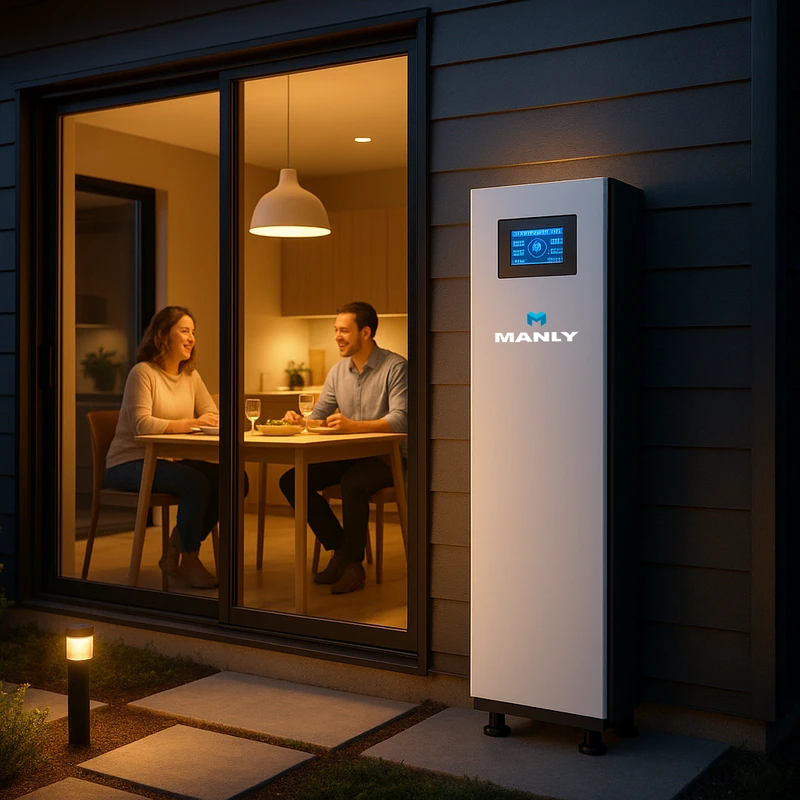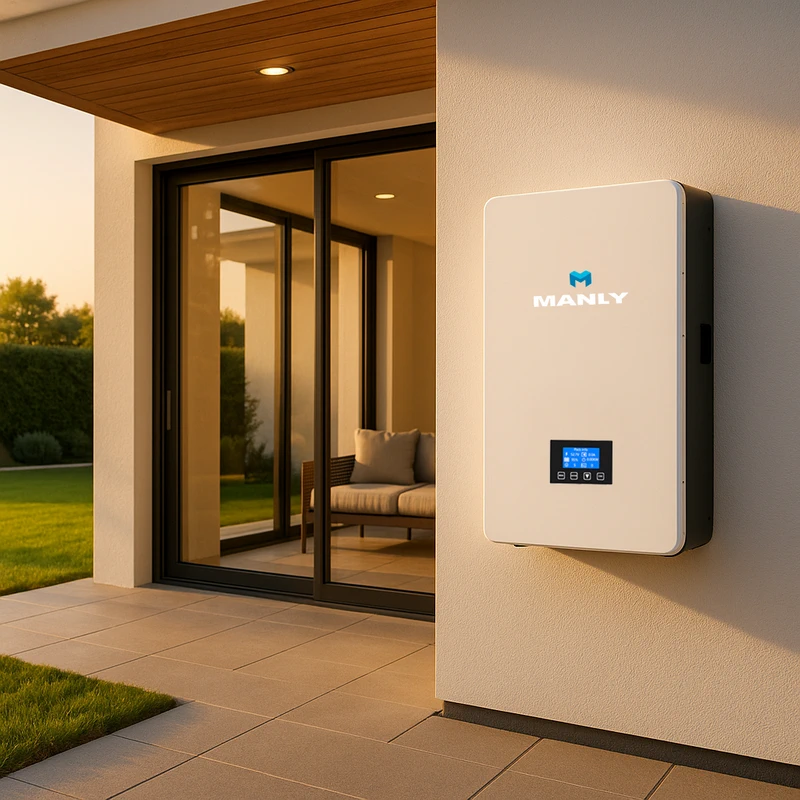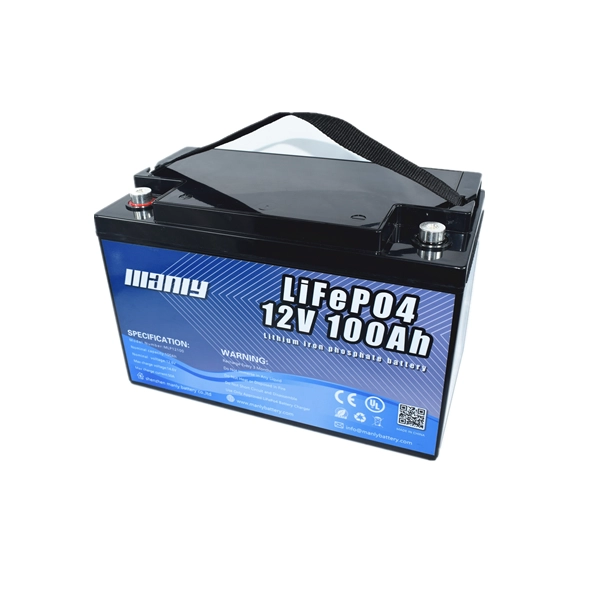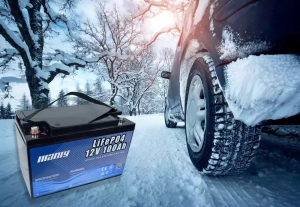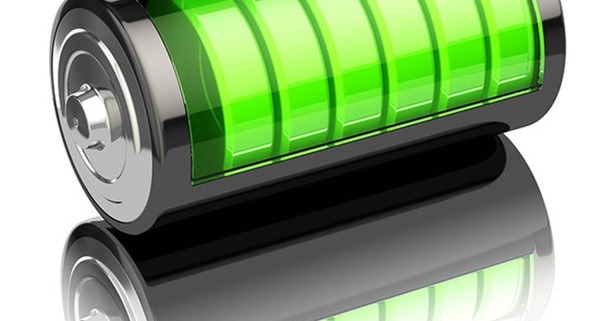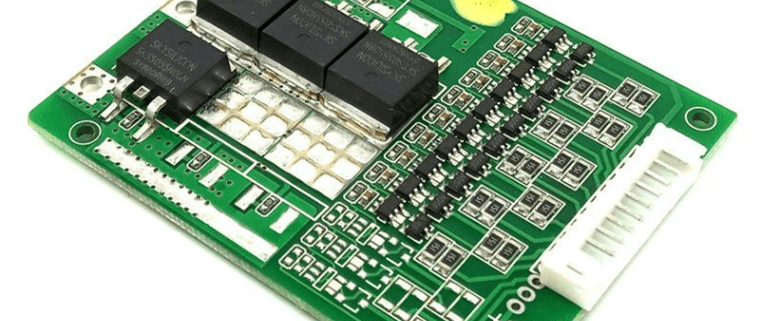The Complete Guide to Solar Battery Storage in South Africa: Types, Benefits, and Smart Buying Tips for 2025
Table of Contents
- The Complete Guide to Solar Battery Storage in South Africa: Types, Benefits, and Smart Buying Tips for 2025
- What Is Solar Battery Storage?
- Which Battery Is Best for Solar System?
- AC Coupled Storage vs. DC Coupled Storage
- How Does Solar Battery Storage Work
- How Many Solar Batteries Are Needed to Power a House?
- Benefits of Solar Battery Storage
- How to buy solar battery online in South Africa Safely and Smartly
- Top solar battery storage manufacturers and Why You Should import solar cell batteries from China
- Conclusion
- FAQ
- Learn More About Battery
- 2023 Lithium Ion vs Lead Acid: A Detailed Comparison
- What Are Lithium Ion Batteries?
- What Is Lead Acid Battery?
- Lithium Ion vs Lead Acid Battery: 10 Key Differences
- Lithium Ion vs Lead Acid: Which Lasts Longer?
- Lithium Ion vs Lead Acid: Prolonging Your Lithium Ion Battery’s Health
- 6 Primary Types of Lithium Ion Batteries
- LiFePO4 Batteries: Leading the Charge in Lithium-Ion Technology
- Lithium Iron Phosphate Battery Vs Lead acid
- MANLY LiFePO4 Battery vs Other Brands LiFePO4 Battery
- Unlocking the Potential of Lithium Batteries Across Industries
- Six Important Parameters of Lithium Batteries
- 1. Battery capacity
- 2. Nominal voltage
- 3. Charge termination voltage
- 4. Discharge termination voltage
- 5. Internal resistance of the battery
- 6. Self-discharge rate
- Lithium battery PCM principle
South Africa’s growing energy crisis has made reliable power solutions more important than ever. For homeowners and businesses looking to reduce dependence on Eskom and survive daily load shedding, Solar Battery Storage offers a practical and long-term solution. This guide walks you through everything you need to know—from battery types and system setups to how to buy solar battery online or import solar cell batteries from China safely. Whether you’re installing a new system or upgrading an old one, this article is designed to help you make smart, cost-effective decisions tailored to South African conditions.
What Is Solar Battery Storage?
Solar Battery Storage is a system designed to hold the excess electricity generated by solar panels during the day. Instead of feeding unused solar energy back into the grid, this energy is stored in a battery and can be used later—especially at night or during blackouts. For South African homes and businesses facing regular load shedding, this system plays a critical role in ensuring a steady and reliable power supply.
1. Key Components of a Solar Battery Storage System
A Solar Battery Storage setup combines several core components, each serving a unique function to capture, store, and convert solar energy for everyday use.
Solar Panels
Solar panels convert sunlight into direct current (DC) electricity. They form the front-end of the system, supplying power during sunny hours. South Africa’s average solar irradiance—estimated at over 220 W/m²—makes solar panels highly effective in local conditions.
Charge Controller
This device manages the flow of electricity from the panels to the battery. It protects the battery from overcharging and extends its lifespan. A quality charge controller ensures efficient charging, even under fluctuating sunlight conditions—common in many regions of South Africa.
Battery Bank
This is the heart of the system. The solar battery stores energy for later use. Two main types dominate the market:
- Lithium-ion batteries, such as Chinese 10 kWh LiFePO4 solar battery packs, are compact, long-lasting (typically 8 to 15 years), and more efficient (up to 95%). Although pricier, they offer better performance and are ideal for residential and commercial users looking for durability and low maintenance.
- Lead-acid batteries are cheaper but bulkier, with shorter lifespans (3 to 5 years) and lower depth-of-discharge capabilities. They may still suit low-budget or backup-only installations.
Inverter
Most home appliances use alternating current (AC), but solar panels and batteries operate in DC. The inverter bridges this gap, converting stored DC into usable AC. A properly sized inverter ensures that you can run essential appliances even during peak usage or outages.
2. Importance in the South African Context
South Africa has experienced repeated energy disruptions due to scheduled power cuts, commonly known as load shedding. In response, more homeowners and businesses are turning to Solar Battery Storage systems to take control of their energy needs.
According to data from Eskom and the South African Reserve Bank, electricity reliability has a direct impact on productivity and household comfort. A robust storage system can:
- Reduce dependence on the unstable grid
- Enable businesses to stay operational, avoiding costly downtimes
- Improve return on investment for solar systems by maximizing self-consumption
Given this backdrop, many South African buyers are choosing to import solar cell batteries from China, particularly from reliable solar battery storage manufacturers offering competitive pricing and quality assurance. Products like Chinese 10 kWh LiFePO4 solar battery packs are gaining popularity due to their proven resilience, high energy density, and value-for-money—especially when purchased in bulk from a trusted battery manufacturer.
Which Battery Is Best for Solar System?
In South Africa, where load shedding is a daily challenge and summer heat can soar above 35°C, selecting the right solar battery isn’t just about efficiency—it’s about survival. For homeowners and businesses alike, the ideal battery must withstand frequent charge-discharge cycles, offer thermal stability, and provide long-term savings. That’s why LiFePO₄ (Lithium Iron Phosphate) batteries are gaining traction across the country. Known for their safety and performance in extreme climates, they stand out as the most practical option in today’s energy environment.
1. Common Solar Battery Types
Lead-Acid Batteries (Flooded & AGM)
These traditional batteries are still widely used due to their low entry cost. However, in the long run, they tend to fall short in terms of durability and maintenance.
- Pros: Affordable upfront investment
- Cons: Short cycle life (2–4 years), low depth of discharge (~50%), and high maintenance demand
- Best for: Users on a tight budget who need backup only during short outages
AGM (Absorbent Glass Mat) Batteries
AGM batteries are a sealed type of lead-acid battery and require no water refills. They’re spill-proof and easier to maintain but still suffer from limited cycle life.
- Pros: Maintenance-free, leak-resistant design
- Cons: Lower energy efficiency and typically 500–1,200 cycles
- Best for: Customers wanting a cleaner alternative to traditional lead-acid, without switching to lithium
Lithium-Ion (Li-ion) Batteries
Standard lithium-ion batteries deliver strong overall performance, balancing lifespan and efficiency. However, they may pose thermal risks if not correctly managed.
- Pros: High energy density, long service life (up to 10 years), faster charging
- Cons: Higher cost and safety risks if BMS (Battery Management System) is poor
- Best for: Users focused on energy efficiency and space-saving
LiFePO₄ (Lithium Iron Phosphate) Batteries
LiFePO₄ is considered the safest and most durable solar battery option available. It handles heat well and lasts thousands of cycles, which is why more South Africans now prefer chinese 10 kWh lifepo4 solar battery packs for long-term energy storage.
- Pros: Thermal stability, 3,000–6,000 charge cycles, high DoD (~90%)
- Cons: Higher initial cost compared to lead-acid
- Best for: Residents in high-temperature zones and those affected by regular load shedding
2. Performance Comparison
| Feature | Lead-Acid | AGM | Li-ion | LiFePO₄ |
|---|---|---|---|---|
| Cycle Life (80% DoD) | 500–1,200 | 500–1,200 | 2,000–5,000 | 3,000–6,000 |
| Depth of Discharge (DoD) | ~50% | ~50% | ~80% | ~90% |
| Maintenance | High | Low | Low | Low |
| Temp. Tolerance | Moderate | Moderate | Moderate | High |
| Upfront Cost | Low | Moderate | High | High |
| Total Lifetime Cost | High | High | Moderate | Low |
3. Suitability for South African Conditions
Heat Resistance
With average summer highs regularly reaching above 30°C in many provinces, battery performance can suffer due to overheating. LiFePO₄ batteries are built to operate efficiently in hot conditions without rapid degradation, unlike lead-acid or AGM models.
Load Shedding Durability
During Eskom’s stage 4 or stage 6 blackouts, batteries are charged and discharged more often than in most countries. Only solar battery systems with high cycle life can survive such stress without frequent replacement—making LiFePO₄ the most dependable solution.
4. Long-Term Cost Considerations
Although LiFePO₄ batteries come at a higher initial price, their extended lifespan and low maintenance make them more cost-effective over time. For example, a typical LiFePO₄ solar battery rated for 6,000 cycles may last 10–15 years under daily use. In contrast, lead-acid units might require 3 or 4 replacements in the same period.
This has driven many local installers and buyers to import solar cell batteries from China, where solar battery storage manufacturers offer bulk deals and advanced battery technologies at more competitive prices. For those looking to buy solar battery online, checking the cycle rating, depth of discharge, and warranty coverage is critical.
AC Coupled Storage vs. DC Coupled Storage
As more South African households invest in Solar Battery Storage, understanding the difference between AC and DC coupled systems has become essential. These two system architectures affect how efficiently solar energy is stored and used—especially during load shedding. Whether you’re upgrading an existing setup or planning a brand-new installation, choosing the right coupling method can impact long-term performance and cost.
1. What Is AC Coupled Storage?
In an AC coupled setup, your solar panels first produce DC electricity. This power is converted into AC through a dedicated solar inverter for home use. Any excess energy is then sent through a battery inverter, which converts the AC back into DC to charge your solar battery. While this may sound like a loop, the structure is ideal for homeowners who already have solar panels installed and want to add storage later without replacing their current inverter system.
Key Advantages:
- Retrofitting Made Easy: If you already own a solar system, AC coupling allows you to add storage without overhauling your existing infrastructure. This makes it the preferred option for South Africans looking to scale in phases.
- Greater System Flexibility: You can independently size your solar array and solar battery, making it easier to upgrade as your energy needs grow.
- Multiple Charging Sources: AC-coupled batteries can recharge from both solar panels and the Eskom grid, ensuring backup power even when solar production is low.
Drawbacks to Consider:
Energy Conversion Losses: Every switch between AC and DC reduces efficiency. Most AC-coupled systems offer about 90–94% round-trip efficiency, slightly lower than DC-coupled alternatives.
Higher Initial Equipment Costs: Because two separate inverters are involved—one for solar and one for storage—the upfront investment tends to be higher.
2. What Is DC Coupled Storage?
DC coupling offers a more streamlined approach. In this configuration, solar panels, the battery, and a hybrid inverter are directly connected. The DC electricity from the panels charges the solar battery without any conversion loss. The hybrid inverter then converts just the required portion into AC to power your home. This system is especially efficient for new solar-plus-storage installations.
Key Advantages:
- Maximum Efficiency: By reducing the number of conversions, DC coupled systems can reach up to 98% efficiency—ideal for South African households trying to get the most out of every kilowatt-hour.
- Lower Equipment Costs for New Builds: One hybrid inverter handles everything, cutting down on hardware and simplifying maintenance.
- Ideal for Self-Consumption: DC coupling allows solar energy to go directly into your battery storage, enabling higher self-use rates and reducing dependence on grid-supplied power.
Potential Limitations:
- Retrofitting Challenges: If you already have a standalone solar inverter, switching to a DC coupled system usually means replacing it with a hybrid model.
- Limited System Expansion: Once installed, the capacity for adding more panels or batteries may be restricted by the size of the hybrid inverter.
3. Practical Considerations for South Africa
In the South African context—where load shedding, rising energy tariffs, and grid instability are the norm—choosing the right system design depends on your specific situation.
For Existing Solar Systems:
If you already have a grid-tied solar setup, AC coupling is generally more cost-effective and easier to implement. It allows you to simply add Solar Battery Storage without replacing your current inverter, saving time and labor.
For New Installations:
DC coupling offers better long-term performance. For South Africans building a system from scratch, it provides higher energy efficiency, streamlined architecture, and lower operational losses.
Role of Hybrid Inverters:
Hybrid inverters, which are increasingly offered by top solar battery storage manufacturers, combine both solar and battery management in one unit. They’re becoming a standard solution in homes seeking all-in-one performance with minimal complexity.
Whether you plan to buy solar battery online or import solar cell batteries from China, make sure your installer matches the battery system type to your inverter configuration. Many customers in South Africa are already switching to chinese 10 kWh lifepo4 solar battery packs due to their high efficiency and long cycle life, especially when paired with DC-coupled hybrid setups.
How Does Solar Battery Storage Work
Understanding how Solar Battery Storage operates is key for South African homeowners facing frequent power disruptions. In simple terms, the system captures excess solar energy during the day, stores it in batteries, and supplies it when sunlight isn’t available—like during evening hours or load shedding. Here’s a step-by-step look at how the energy flows through the system and how it helps keep your home powered when the grid fails.
1. Simplified Energy Flow
Solar Panels Generate DC Power
During the day, solar panels absorb sunlight and convert it into direct current (DC) electricity. South Africa’s high solar irradiance—often exceeding 5 kWh/m²/day—makes this process highly efficient in most regions, from the Western Cape to Gauteng.
Charge Controller Regulates Power
Before the energy reaches your solar battery, it passes through a charge controller. This device ensures the voltage and current stay within safe limits, protecting the battery from overcharging. Proper regulation also extends battery lifespan—critical for systems exposed to high temperatures like those in Limpopo or the Northern Cape.
Battery Bank Stores DC Energy
Once regulated, the DC electricity is stored in a battery bank. Most South African homeowners now prefer lithium-ion or LiFePO₄ batteries due to their long lifespan, deep discharge capability, and better tolerance to heat. For instance, chinese 10 kWh lifepo4 solar battery packs are widely adopted for their balance of performance and affordability.
Inverter Converts DC to AC
Your household appliances use alternating current (AC). So when power is needed, an inverter converts the stored DC energy into AC, matching the standard voltage used in South African homes (typically 230V, 50Hz). This ensures that lights, TVs, fridges, and other essentials continue working, even when the grid goes down.
Appliances Draw Backup Power
When load shedding strikes, or at night when solar generation drops to zero, the inverter feeds stored power to selected appliances. With proper system sizing, most families can cover their lighting, security systems, and communications equipment for several hours without interruption.
2. Real-World Example: Load Shedding Backup
In metro areas like Johannesburg, Cape Town, and Durban, Stage 4 load shedding can cut power for up to four hours at a time. A 5 kWh battery system can typically run LED lights, Wi-Fi routers, and phone chargers for around 3–4 hours. For homes that want to power fridges, security gates, and TV sets as well, a 10 kWh setup offers broader coverage. Many families now buy solar battery online or work with local installers to match capacity with their actual needs.
3. Smart BMS & Mobile-App Monitoring
Modern Solar Battery Storage systems aren’t just boxes with wires—they’re intelligent platforms equipped with Battery Management Systems (BMS) and real-time control apps. These systems offer:
Live Status Updates: Monitor individual cell voltages, battery temperature, and overall state of charge in real-time.
Control Functions: Adjust charging parameters, discharge limits, or set alerts for unusual activity—remotely through a password-secured mobile app.
Performance Analytics: Review daily energy generation and consumption patterns to improve efficiency and predict storage needs more accurately.
Many of these features are standard on systems from advanced solar battery storage manufacturers, giving South African users full control over their energy supply.
4. Tailored Solutions for South African Homes
For typical South African households dealing with unpredictable power supply, a battery system between 5 kWh and 10 kWh usually meets the essential load demand. This range is ideal for backing up lighting, electronics, and refrigeration during power cuts, while also reducing long-term electricity costs.
Many users now prefer to import solar cell batteries from China for better value and advanced technology, especially from trusted battery manufacturers offering warranties and international support. When matched with the right inverter and solar panel setup, these systems provide a stable, smart, and scalable energy solution for modern South African living.
How Many Solar Batteries Are Needed to Power a House?
When it comes to sizing your Solar Battery Storage system in South Africa, it’s not a one-size-fits-all decision. Your energy needs depend on your home’s daily usage, how long you want backup power to last during load shedding, and what appliances you plan to run. With the national grid under pressure and blackouts common in both urban and rural areas, getting this calculation right is essential for energy security and cost-effectiveness.
Step 1: Review Your Daily Electricity Use
Start by checking your latest electricity bills. Look for your average daily usage in kilowatt-hours (kWh). For example, if your household uses around 12 kWh per day, your battery system should ideally be able to store slightly more than that—to account for energy conversion losses and ensure a buffer during cloudy days or extended blackouts.
In South Africa, small homes typically use 6–8 kWh/day, while medium homes fall into the 10–12 kWh range. Larger households can exceed 18 kWh, especially when electric geysers and air conditioners are in regular use.
Step 2: Calculate Backup Time Requirements
Next, consider how long you want your solar battery to supply power when the grid is down. If your critical appliances—such as lights, routers, and a fridge—use around 2 kW per hour, and you want 6 hours of backup, you’ll need at least 12 kWh of usable storage capacity.
Load shedding in areas like Pretoria and Cape Town can last 4–6 hours, so this calculation helps determine a realistic system size that keeps your essentials running through every blackout.
Step 3: Account for Depth of Discharge (DoD)
Most lithium-ion batteries, including popular LiFePO₄ types, have a usable Depth of Discharge (DoD) of 90%. That means you can use 90% of the battery’s capacity without damaging its lifespan.
So, if you need 12 kWh of usable power, divide it by 0.9 to find the total battery capacity needed:
12 kWh ÷ 0.9 = 13.3 kWh
This safety margin ensures long-term performance and protects your investment. Leading battery manufacturers often specify this value clearly, especially when you buy solar battery online or import solar cell batteries from China.
Step 4: Match Capacity to Appliance Use
Your energy storage system must match your actual appliance usage. If you plan to run high-draw items like an oven, electric heater, or aircon during outages, your battery needs will increase substantially.
On the other hand, if your goal is to cover essentials only—such as LED lighting, phone charging, Wi-Fi, and refrigeration—a smaller setup will do just fine.
Some customers opt to install chinese 10 kWh lifepo4 solar battery packs, which strike a good balance between size and affordability for most mid-sized South African homes.
Recommended Battery Configurations for South African Households
| Household Size | Daily Energy Use | Suggested Battery Capacity | Common Setup Options |
|---|---|---|---|
| Small (1–2 people) | 6–8 kWh | 7–9 kWh | 1 x 10 kWh lithium battery |
| Medium (3–4 people) | 10–12 kWh | 12–14 kWh | 2 x 7 kWh batteries or 1 x 15 kWh system |
| Large (5+ people) | 14–18 kWh | 16–20 kWh | 2 x 10 kWh batteries or 1 x 20 kWh high-capacity |
These setups are based on typical usage and assume a focus on essential circuits. They can be scaled further if you want to go fully off-grid or add solar panels later.
Top solar battery storage manufacturers often provide modular solutions, so you can start small and expand over time as your needs or budget grow.
Benefits of Solar Battery Storage
With South Africa’s ongoing energy challenges, Solar Battery Storage has become more than just a green upgrade—it’s now a practical necessity. From navigating load shedding to reducing your monthly energy bills, the benefits of integrating a battery into your solar system extend well beyond simple convenience. Here’s how homeowners across the country are gaining real value from this technology.
1. Enhanced Energy Independence
One of the biggest draws of solar battery systems is their ability to make homes less reliant on Eskom’s unreliable grid. With load shedding often reaching Stage 4 or higher, families need a reliable source of power they can control. A Solar Battery Storage system stores the excess electricity your panels generate during the day, so you can use it at night or during power outages.
By storing your own solar energy, you reduce your dependence on grid-supplied electricity and take a major step toward self-sufficiency—particularly important in provinces like Gauteng and the Eastern Cape, where outages are more frequent and disruptive.
2. Load Shedding Resilience
Load shedding doesn’t just cause inconvenience—it can also damage electronic devices and interrupt essential daily functions. When your home is equipped with a properly sized solar battery, you can keep critical systems running, such as:
Lighting and security systems
Wi-Fi routers and phones
Refrigerators and medical devices
By minimizing the impact of power cuts, battery systems bring peace of mind and a safer living environment—especially for households with children, elderly members, or those who work from home.
3. Reduced Electricity Costs
South Africans have seen steady increases in electricity tariffs over the past decade. Using stored solar energy during peak billing hours can significantly reduce your reliance on expensive grid electricity.
For example, by discharging your battery during the evening peak window (typically from 5pm to 9pm), you avoid higher rates and reduce your monthly bill. Over time, these savings can offset the initial investment—especially when you choose long-life options like chinese 10 kWh lifepo4 solar battery packs that offer 6,000+ cycles of use.
Many homeowners now buy solar battery online from trusted battery manufacturers, selecting systems that align with local Eskom billing structures and personal consumption patterns.
4. Environmental Benefits
Diesel generators—often used as backup power—emit harmful pollutants, contribute to noise pollution, and require ongoing fuel costs. Solar Battery Storage allows homes to stay powered without relying on fossil fuels.
By using clean energy stored during the day, households reduce their carbon footprint and help lower overall emissions. This transition also supports South Africa’s broader commitment to renewable energy targets under the Integrated Resource Plan (IRP).
5. Higher Property Value
Installing a solar battery system is not only a functional upgrade—it’s also a smart investment. Properties with integrated solar and storage solutions are increasingly attractive to buyers seeking long-term savings and energy resilience.
Real estate data from leading South African agencies shows that homes with solar energy systems can command 3–4% higher resale values, especially in markets like Cape Town and Pretoria. When paired with quality components from reputable solar battery storage manufacturers, this enhancement adds lasting value to your property.
How to buy solar battery online in South Africa Safely and Smartly
1. Trusted Platforms to Buy Solar Batteries Online
For South African homeowners and small businesses, knowing where to buy solar battery online safely and confidently is critical—especially as load shedding continues to affect daily life. With a growing number of suppliers both locally and internationally, it’s essential to evaluate the reliability, certifications, and after-sales support before making a purchase. Here’s a breakdown of platforms trusted by many in South Africa and what to look out for when choosing your solar battery source.
1.1. Local Retailers
Takealot
As one of South Africa’s largest online marketplaces, Takealot offers a wide selection of solar battery storage products, including lithium-ion and LiFePO₄ models. Warranties typically range from 6 months to 10 years, and delivery covers most urban and rural areas nationwide. Their 30-day return policy adds extra peace of mind, especially for first-time buyers.
Builders Warehouse
Known primarily for home improvement goods, Builders now stocks solar batteries suitable for home backup systems. The advantage lies in their in-store consultations and optional installation support, which is ideal for those unfamiliar with battery setup.
These platforms are particularly useful for buyers who prefer to see local warranty terms, avoid customs fees, and have access to nearby support services.
1.2. International Suppliers
Alibaba
This global e-commerce site offers a massive range of solar battery types, including high-capacity options like chinese 10 kWh lifepo4 solar battery packs. While prices are often competitive, South African buyers must verify whether the battery manufacturer provides valid product certifications (like UN38.3 and CE) and whether the battery is suitable for local inverter systems.
Made-in-China
This B2B-focused platform is another way to import solar cell batteries from China. The site lists dozens of solar battery storage manufacturers, but due diligence is required—ensure the supplier has a history of exporting to South Africa and offers documentation in English.
International sourcing can save money when buying in bulk, but it also comes with higher risks related to delivery delays, quality concerns, and complex warranty claims.
1.3. Manufacturer Websites
MANLY Battery
MANLY Battery is a top battery manufacturer in China with over 13 years of experience. They produce over 3,000 LiFePO₄ batteries daily, covering 6V–72V for solar energy storage, UPS, golf carts, and more. Their products offer up to 95% efficiency, work from -20°C to 75°C, and include safety features like overcharge protection. All batteries come with UN38.3, CE, UL, and IEC62133 certifications and a 10-year warranty—ideal for those looking to buy solar battery online or import solar cell batteries from China with confidence.
REVOV (South Africa)
REVOV is a well-known battery manufacturer based in South Africa offering lithium-ion storage systems designed for backup and off-grid use. Their batteries come with a 10-year warranty, and their local technical team ensures smoother installations and faster customer support turnaround.
2. Essential Certifications to Look For
Whether you’re purchasing locally or planning to import solar cell batteries from China, always confirm the product meets safety and transport standards. Look for:
- UN38.3 – Verifies lithium battery safety during air and sea shipping
- CE – Indicates compliance with European Union safety and environmental standards
- IEC 62619 – Ensures battery safety for stationary applications, including solar energy storage
These certifications are crucial for safe use, particularly in high-temperature regions like the Northern Cape or KwaZulu-Natal.
3. Safety and Smart Purchasing Tips
3.1. Verify the Seller’s Background
Research the supplier’s track record. Check for verified reviews, return policy history, and whether they’ve served South African customers before.
3.2. Confirm Warranty & Support Availability
Choose brands that offer a minimum 5-year warranty for lithium models. For example, REVOV includes a 10-year warranty and offers South African-based support.
3.3. Be Wary of Prices That Look Too Low
If a solar battery is priced far below the market average, it may be poorly made or missing key safety certifications. Counterfeit batteries are a growing problem, especially in online cross-border sales.
3.4. Look for After-Sales Service
Make sure the supplier provides support for firmware updates, BMS issues, and installation queries. Having local agents or partners in South Africa is a major advantage.
3.5. Understand Return and Refund Policies
Know exactly what happens if your battery is damaged on arrival or doesn’t match the listing. Local retailers usually have more consumer-friendly protections than international platforms.
Top solar battery storage manufacturers and Why You Should import solar cell batteries from China
1. Top Solar Battery Storage Manufacturers
MANLY Battery
Founded in 2009, MANLY Battery is a trusted battery manufacturer based in China, known for producing high-efficiency LiFePO₄ batteries for solar and industrial use. With over 500 staff and advanced facilities, MANLY delivers up to 3,000 batteries daily and supports full customization. Their products feature 95% efficiency, multiple safety layers, and carry certifications such as UN38.3, IEC62133, and UL2054—ideal for anyone looking to import solar cell batteries from China for South African energy projects.
Pylontech
Pylontech is well-regarded in South Africa for its modular battery units, including the US2000 and UP5000 models. These solar battery storage systems are valued for their ease of expansion, long cycle life, and seamless inverter compatibility.
BYD
A global name in battery tech, BYD’s Battery-Box series is popular in both residential and commercial solar setups. The brand is known for safety, performance, and strong international support.
Dyness
Dyness designs compact, scalable solar battery systems like the BX51100 (5.12 kWh), tailored for easy installation. Their LiFePO₄ tech is efficient and well-suited for hybrid or off-grid systems.
Felicity Solar
Felicity Solar provides full solar energy solutions and LiFePO₄ batteries for homes and businesses. Their systems are widely adopted in rural electrification and off-grid projects.
2. Advantages of Importing Solar Cell Batteries from China
Advanced Battery Technology
Chinese brands lead in LiFePO₄ innovation, offering long-lasting, energy-dense, and safe batteries suitable for high-load or off-grid applications.
Cost-Effective Pricing
Thanks to mass production and supply chain efficiency, top solar battery storage manufacturers in China offer competitive prices—beneficial for South African distributors and installers.
Bulk Capacity and Delivery Speed
Manufacturers like MANLY Battery operate large-scale factories capable of fulfilling large orders quickly, reducing lead times for commercial and municipal projects.
3. Why South African Buyers Benefit from Chinese Imports
Limited Domestic Output
Local battery production in South Africa remains limited. Importing from China helps bridge the gap and support the growing demand for Solar Battery Storage systems.
Project-Specific Customization
Many Chinese suppliers provide tailored battery configurations and offer technical support to ensure local compatibility and installer readiness.
Long-Term Supply Partnerships
Working directly with Chinese battery manufacturers allows for better pricing, stable inventory, and trusted after-sales service for ongoing projects.
Conclusion
As South Africa continues to face unstable electricity supply and rising tariffs, Solar Battery Storage is no longer just an upgrade—it’s a necessity. Whether you choose chinese 10 kWh lifepo4 solar battery packs or source from trusted solar battery storage manufacturers, the key lies in choosing certified products that match your energy needs. From understanding AC vs. DC setups to knowing how many batteries your household really needs, this guide provides the tools to plan with confidence. By taking the time to compare options, validate suppliers, and factor in long-term savings, you can take control of your energy future—safely, smartly, and sustainably.
FAQ
How long do solar batteries last in garden lights?
Most solar batteries in garden lights last between 1 to 3 years, depending on the battery quality, sunlight exposure, and weather conditions. In South Africa, with its high solar irradiance, garden solar lights often get enough charge during the day. However, battery life can shorten in areas with frequent rain, shade, or dust accumulation on panels. NiMH and Li-ion batteries tend to last longer than older NiCd options. Replacing the batteries every 2 years helps maintain brightness and reliability.
How long to charge 12V battery with solar panel?
Charging a 12V battery with a solar panel in South Africa typically takes 4 to 12 hours, depending on sunlight intensity, panel wattage, and battery capacity. For example, a 100W panel under full sun can charge a 100Ah battery in about 10–12 hours. In sunny provinces like Limpopo or Northern Cape, charging is faster due to more consistent peak sun hours. Always use a charge controller to prevent overcharging and extend battery life.
Learn More About Battery
What Are Lithium Ion Batteries?
Table of Contents
- What Are Lithium Ion Batteries?
- What Is Lead Acid Battery?
- Lithium Ion vs Lead Acid Battery: 10 Key Differences
- Lithium Ion vs Lead Acid: Which Lasts Longer?
- Lithium Ion vs Lead Acid: Prolonging Your Lithium Ion Battery’s Health
- 6 Primary Types of Lithium Ion Batteries
- LiFePO4 Batteries: Leading the Charge in Lithium-Ion Technology
- Lithium Iron Phosphate Battery Vs Lead acid
- MANLY LiFePO4 Battery vs Other Brands LiFePO4 Battery
- Unlocking the Potential of Lithium Batteries Across Industries
Lithium-ion batteries are currently the most widely used type of rechargeable batteries. They are the power source behind everyday devices like smartphones, laptops, electric vehicles, and much more.
1. The Widespread Presence of Lithium-Ion Batteries
These batteries are an integral part of our daily lives. They are found in numerous gadgets and tools, including cell phones, tablets, laptops, smartwatches, portable chargers, emergency power sources, electric shavers, electric bicycles and cars, public transport vehicles, sightseeing carts, drones, and various electric tools.
2. How Do Lithium Ion Batteries Work?
Lithium ion batteries function by utilizing lithium ions to store energy. This process involves creating a voltage difference between the battery’s positive and negative sides. The battery contains a special part called a separator, which keeps the two sides apart. This separator allows lithium ions to move across it but prevents the flow of electrons.
- Charging and Discharging Process: When you charge a lithium-ion battery, the lithium ions travel from the positive side to the negative side through the separator. Conversely, when the battery is in use (discharging), the ions move back to the positive side. This back and forth movement of ions is what generates the battery’s voltage.
- Powering Your Devices: The voltage created by the lithium-ion battery is used to power electronic devices. When a device is connected to the battery, it directs the electrons, which were blocked by the separator, to flow through the device, providing it with the necessary power.
What Is Lead Acid Battery?
Lead acid batteries are a type of rechargeable battery that harnesses the chemical interaction between lead and sulfuric acid to generate electricity. They’re commonly used in various applications due to their reliability and rechargeability. The core of these batteries is the lead submerged in sulfuric acid, which facilitates a controlled chemical reaction essential for power generation and storage.
1. How Lead Acid Batteries Function
In a lead acid battery, the electrodes are primarily composed of lead and its oxides, while the electrolyte is a sulfuric acid solution. When discharging, the positive electrode is mainly lead dioxide, and the negative electrode is lead. During charging, both electrodes become primarily lead sulfate. A single cell typically has a nominal voltage of 2.0V, can discharge to 1.5V, and charge up to 2.4V. For practical use, six single cells are often connected in series to create a standard 12V battery, with other configurations like 24V, 36V, and 48V also available.
2. Applications of Lead Acid Batteries
Lead acid batteries are versatile and find use in various sectors:
Standby Power Sources
- Telecommunications
- Solar Energy Systems
- Electronic Switch Systems
- Communication Equipment: Base Stations, PBX, CATV, WLL, ONU, STB, Cordless Phones
- Backup Power: UPS, ECR, Computer Backup Systems, Sequence, ETC
- Emergency Equipment: Emergency Lights, Fire and Burglar Alarms, Fire Doors
Primary Power Sources
- Communication Devices: Transceivers
- Power Control Vehicles: Collection Vehicles, Automated Transport Vehicles, Electric Wheelchairs, Cleaning Robots, Electric Cars
- Mechanical Tool Starters: Lawnmowers, Hedge Trimmers, Cordless Drills, Electric Screwdrivers, Electric Snow Sleds
- Industrial Equipment/Instruments
- Photography: Flashlights, VTR/VCR, Movie Lights
- Other Portable Devices
Lithium Ion vs Lead Acid Battery: 10 Key Differences
1. Differences in Material Composition
Both lithium ion and lead acid batteries operate on similar principles, but the materials they use differ significantly. Lead acid batteries employ lead as the anode and lead oxide as the cathode, with sulfuric acid serving as the electrolyte. In contrast, lithium ion batteries use carbon for the anode and lithium oxide for the cathode, with lithium salt as the electrolyte. The flow of ions between the anode and cathode through the electrolyte is what generates power in both types, reversing during charging.
2. Cost Considerations
Initially, lead acid batteries are more affordable and easier to install than lithium ion ones. However, the price of a lithium ion battery can be twice that of a lead acid battery for the same energy capacity. Despite this, lithium ion batteries offer a longer lifespan, making them more cost-effective for long term applications compared to lead acid batteries.
3. Comparing Battery Capacities
Battery capacity reflects the amount of energy a battery can store per unit volume. Lithium ion batteries boast a higher capacity than lead acid batteries, indicating a greater amount of active material within.
4. Energy Density and Specific Energy
Energy density is crucial in selecting the right battery for specific needs, showing the relationship between a battery’s capacity and its weight. Lithium-ion batteries exhibit higher specific energy compared to lead-acid batteries, making them the preferred choice in electric vehicle (EV) applications.
5. Weight and Size
Thanks to their higher energy density and capacity, lithium-ion batteries are lighter and more compact than lead-acid batteries of the same capacity.
6. Depth of Discharge (DoD) Comparison
DoD measures how much of a fully charged battery can be used without needing a recharge. Lead-acid batteries typically have a DoD of 50%, meaning only half the battery’s capacity should be used before recharging. On the other hand, lithium-ion batteries offer a higher DoD of 80%, allowing for extended use. Modern lithium-ion batteries even reach 100% DoD, showcasing their efficiency and endurance.
7. Durability and Longevity
Lead-acid batteries typically have a lifespan of up to two years with proper maintenance, including recharging after 50% usage. Over-draining can limit their life to just one year. In contrast, lithium-ion batteries boast a remarkable durability of up to 10 years, enduring up to 10,000 cycles.
8. Cycle Life
The cycle life of a battery indicates the number of complete charge and discharge cycles it can handle. Lithium-ion batteries often sustain around 5,000 cycles without significant performance loss, even when fully discharged. Lead-acid batteries, however, generally last between 300 to 500 cycles, with full discharge adversely impacting their cycle life.
9. Charging Speed
Charging speed is a key differentiator between these two types. Lithium-ion batteries can charge much faster than lead-acid batteries, making them preferable for applications needing quick recharge, like electric vehicles (EVs).
10. Safety Considerations
Both battery types pose safety risks if mishandled, especially when overcharged. Lead-acid batteries contain corrosive sulfuric acid and can produce explosive gases. Lithium-ion batteries are at risk of thermal runaway, which can also lead to explosions. Manufacturers like CATL and Panasonic Corporation are key players in creating safer battery systems. The battery’s application often dictates the choice between lithium-ion and lead-acid batteries.
Lithium Ion vs Lead Acid: Which Lasts Longer?
1. Understanding Battery Lifespan and Efficiency
When it comes to longevity, lithium ion (Li-ion) batteries generally have a longer life than lead acid batteries. This is mainly due to their higher life cycle numbers, meaning they don’t need replacing as often. This not only cuts down on replacement costs but also aligns with eco-friendly recycling practices. Additionally, Li-ion batteries are tougher, performing more effectively in demanding environments.
- Efficiency Matters: In the lithium ion vs lead acid comparison, efficiency plays a crucial role. Efficiency refers to the percentage of the energy stored in the battery that can be effectively utilized. Li-ion batteries are typically at least 95% efficient, significantly outperforming lead acid batteries, which have efficiencies around 80-85%.
- Battery Discharge Curve: The discharge curve is crucial as it influences how quickly a battery can charge and its effective capacity – the actual amount of energy a battery can store. Li-ion batteries have a superior discharge curve, maintaining their voltage until almost fully depleted, unlike lead acid batteries, which experience a significant voltage drop during discharge.
2. Usage Patterns: A Key Differentiator
- Lithium ion Batteries: Li-ion batteries are known for their speedy charging times, making them ideal for extended use across multiple work shifts. They lack a memory effect, allowing for partial charging without reducing their overall lifespan. A typical usage pattern includes 8 hours of operation, a swift 1-hour recharge, followed by another 8 hours of use. This cycle enables continuous usage over a 24-hour period, with only brief pauses for charging.
- Lead Acid Batteries: In contrast, lead acid batteries generate substantial heat while charging, necessitating a cooldown period. Their typical usage cycle includes 8 hours of operation, followed by 8 hours of charging and an equal period of rest. This pattern limits their use to one shift per day, requiring additional batteries for multi-shift operations. They also need well-ventilated areas for charging to prevent the buildup of hazardous gases.
Lithium Ion vs Lead Acid: Prolonging Your Lithium Ion Battery’s Health
1. Introduction to Lithium Ion Battery Care
Maximizing the lifespan of lithium ion batteries is crucial for ensuring long-term efficiency and performance. Implementing strategies such as partial discharge cycles, avoiding full discharges, and managing charging temperatures can significantly impact their durability. It’s important to note that while lead acid batteries should not be discharged beyond 50%, lithium ion batteries can handle deeper discharge cycles without adverse effects.
2. Key Techniques for Prolonging Battery Life
- Optimal Discharge Cycles: Utilize only 20-30% of the battery’s capacity before recharging. Avoid keeping the battery fully charged or fully discharged for extended periods, as both extremes can shorten its lifespan.
- Temperature Management During Charging: Charging lithium ion batteries in extreme temperatures, particularly below freezing, can reduce their longevity. Ensure the charging environment is temperature controlled to extend battery life.
- Proper Charging Practices: Use the correct charger type for your lithium ion battery to ensure it charges efficiently and safely. Lithium ion batteries require more specific charging regimes compared to lead acid batteries.
- Benefits of Lithium Ion Over Lead Acid: Lithium ion batteries offer a range of advantages over lead acid batteries, including improved performance in challenging environments and overall cost-effectiveness over their lifespan.
3. Detailed Tips for Optimal Battery Usage
- Lowering Discharge Rates: Reducing the C rate during discharge helps maintain the battery’s capacity and cycle life. Avoid high discharge rates to prevent increased internal resistance and premature aging.
- Temperature Considerations: The operating temperature significantly impacts a battery’s power consumption and efficiency. Manage temperatures effectively to enhance lithium ion battery performance.
- Partial Depth of Discharge (DoD): Favor partial discharges over full cycles. A shallower DoD results in a significantly higher number of battery cycles, thereby extending the battery’s lifespan.
- Balancing Multiple Cells: If your battery pack has more than one cell, periodic balancing is necessary to ensure even usage and prevent voltage loss. Employ methods like bypassing certain cells during charging to focus on weaker cells.
- Monitoring the State of Health (SoH): Keeping track of the SoH provides insights into the battery’s condition and remaining lifespan. A drop in SoH indicates the need for maintenance or replacement.
6 Primary Types of Lithium Ion Batteries
Lithium ion batteries, a cornerstone of modern technology, come in several types, each with unique characteristics and applications. The diversity in lithium ion batteries stems from the various active materials used in their construction, influencing their performance, longevity, and suitability for different uses.
Key Types of Lithium Ion Batteries
- Lithium Iron Phosphate (LFP): Known for their durability and safety, LFP batteries use phosphate in the cathode and a carbon electrode in the anode. These batteries are known for their long life cycle and good thermal stability. They are ideal for replacing lead-acid deep-cycle batteries due to their nominal voltage and stability.
- Lithium Cobalt Oxide (LCO): These batteries are notable for their high specific energy but are limited in high-load situations. They were commonly used in portable electronics like phones and laptops but have seen a decline in popularity due to cost and safety concerns.
- Lithium Manganese Oxide (LMO): LMO batteries, used in tools and some hybrid vehicles, offer quick charging and high specific power. They stand out for their improved thermal stability and versatility in different applications.
- Lithium Nickel Manganese Cobalt Oxide (NMC): Combining nickel, manganese, and cobalt, NMC batteries balance stability with high energy density. They are frequently used in power tools and electric vehicles.
- Lithium Nickel Cobalt Aluminium Oxide (NCA): Offering high specific energy and a respectable lifespan, NCA batteries are a popular choice in the electric vehicle industry, particularly for high-performance models like Tesla.
- Lithium Titanate (LTO): Unique for using lithium titanate instead of graphite in the anode, LTO batteries are exceptionally safe and fast-charging. They are used in various applications, including electric vehicles and energy storage, despite their lower energy density and higher cost.
LiFePO4 Batteries: Leading the Charge in Lithium-Ion Technology
Lithium Iron Phosphate (LiFePO4) batteries are one of many types of lithium-ion batteries, each defined by different cathode materials. Other common types include Lithium Cobalt Oxide (LCO), Lithium Manganese Oxide (LMO), Lithium Nickel Cobalt Aluminum Oxide (NCA), Lithium Nickel Manganese Cobalt Oxide (NMC), and Lithium Titanate (LTO). Each has unique strengths and weaknesses, making them suitable for specific applications. (Learn more about Best LiFePO4 Battery)
Energy Density Comparison
LiFePO4 batteries boast one of the highest specific power ratings among lithium-ion batteries, meaning they can deliver large amounts of current efficiently. However, they have a lower specific energy, indicating less energy storage capacity per unit weight compared to other types. While this may not be a concern for many applications, it can be limiting in scenarios requiring high energy density, such as in battery electric vehicles.
Battery Life Cycles
LiFePO4 batteries excel in longevity, with lifespans starting at 2,000 full discharge cycles and potentially exceeding 5,000 cycles. This extended lifespan, only second to Lithium Titanate, offers significant advantages in terms of cost-effectiveness and environmental impact.
Discharge Rates
LiFePO4 batteries commonly feature a 1C continuous discharge rate, with the potential to exceed this under certain conditions. This capability makes them suitable for high-power applications that require current spikes at startup.
Operating Temperatures
With a high thermal runaway threshold of approximately 270 degrees Celsius, LiFePO4 batteries can operate safely under higher temperatures compared to other lithium-ion types. This characteristic, combined with robust Battery Management Systems (BMS), significantly reduces the risk of thermal runaway events.
Safety Advantages
Among all lithium-ion batteries, LiFePO4 batteries are known for their stability and safety, making them a preferred choice for both consumer and industrial applications. Their safe chemistry, alongside Lithium Titanate, is ideal for applications requiring a high degree of safety and reliability.
LiFePO4 vs. Other Lithium Ion Batteries
While LiFePO4 batteries may not be optimal for small, wearable devices due to lower energy density, they excel in larger applications like solar energy systems, RVs, golf carts, and electric motorcycles. They surpass other lithium-ion batteries in cycle life, safety, and depth of discharge capabilities.
Cycle Life and Safety
LiFePO4 batteries can achieve over 3,000-5,000 cycles, with the ability to reach 100% depth of discharge without over-discharging risks. This longevity, combined with their inherent safety, makes them the safest lithium battery type available, surpassing lithium-ion and other battery types in safety metrics.
Environmental and Efficiency Advantages
Eco-friendly and rechargeable, LiFePO4 batteries outperform lead-acid batteries in terms of efficiency, life span, and environmental impact. They charge faster, have a lower self-discharge rate, and maintain consistent power even below 50% battery life, all with no maintenance requirements.
Size and Weight Benefits
LiFePO4 batteries are significantly lighter than other lithium and lead-acid batteries, enhancing fuel efficiency and maneuverability in vehicles. Their compact size also frees up space for additional applications.
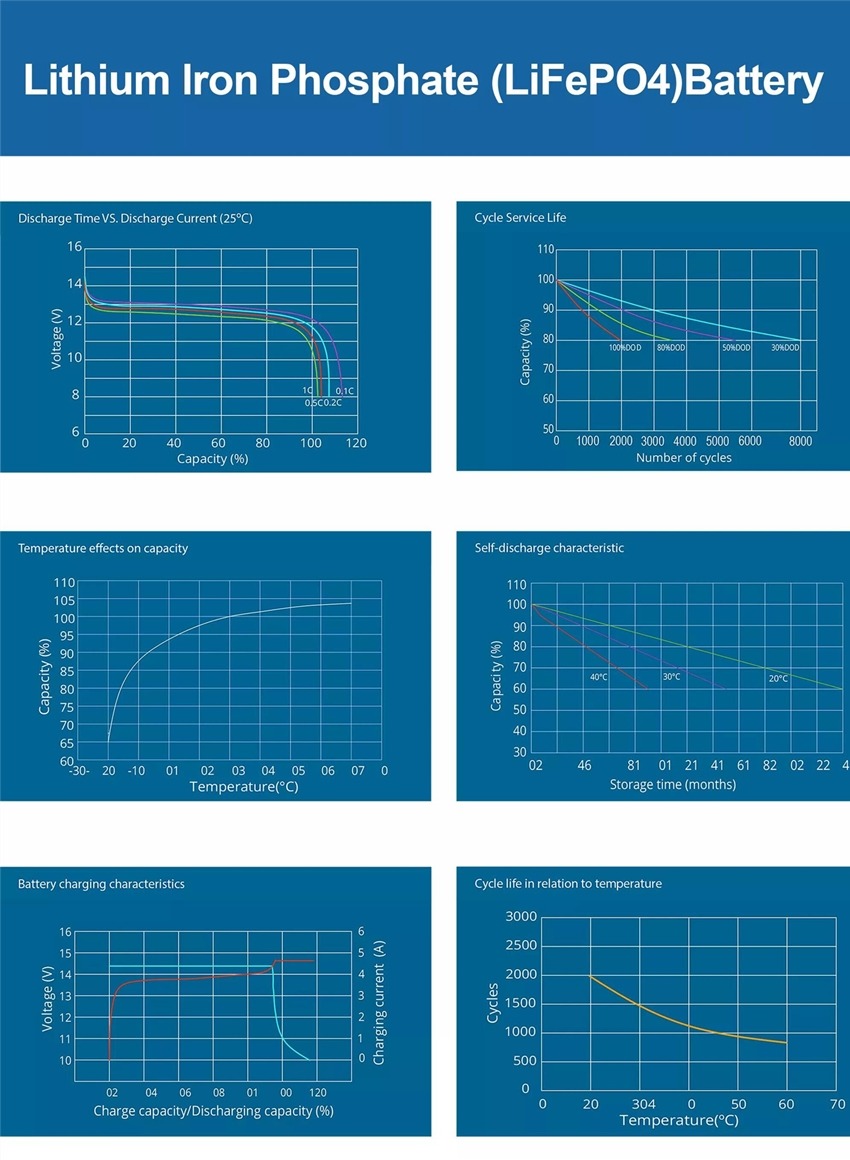
Lithium Iron Phosphate Battery Vs Lead acid
Lithium iron phosphate battery:
- Durability: Lithium iron phosphate battery has strong durability, slow consumption, more than 2000 charging and discharging times, and no memory, and the general life span is 5-8 years.
- Discharge rate: Lithium iron phosphate battery can be discharged with high current, suitable for solar street lights, electric cars, electric bicycles, etc.
- In terms of volume and quality: Lithium batteries are relatively small in size.
- Battery capacity: The capacity of lithium batteries in the same volume is larger. The lead-acid battery has a capacity of about 20 amps; the lithium battery has a capacity of 8-10 amps.
- No memory effect: Lithium iron phosphate battery can be charged and used at any time, no matter what state it is in. It does not need to be discharged before recharging.
- Nominal voltage of monomer: The nominal voltage of lithium iron phosphate battery is 3.2V.
- Environmental protection: Lithium materials do not contain any toxic and harmful substances, and are regarded as green and environmentally friendly batteries in the world. The batteries are pollution-free in production and use, and have become a hot research topic.
- Safety: Lithium iron phosphate has passed strict safety tests and will not explode even in the worst traffic accidents, showing higher safety performance.
Lead-acid batteries:
- Lead-acid batteries are generally deep-charged and discharged within 300 times, have memory, and have a lifespan of about two years. And there is liquid in the lead-acid battery, after a period of consumption, if the battery is found to be hot or the charging time becomes shorter, you need to replenish the liquid. To
- Generally, the weight of lead-acid batteries is 16-30 kg, and the volume is relatively large;
- There is a large amount of lead in lead-acid batteries. If they are not handled properly after being discarded, they will pollute the environment and cause pollution during the production process. To
- The nominal voltage of a lead-acid battery is 2V, and the voltage of an ordinary lead-acid battery is usually 12V.
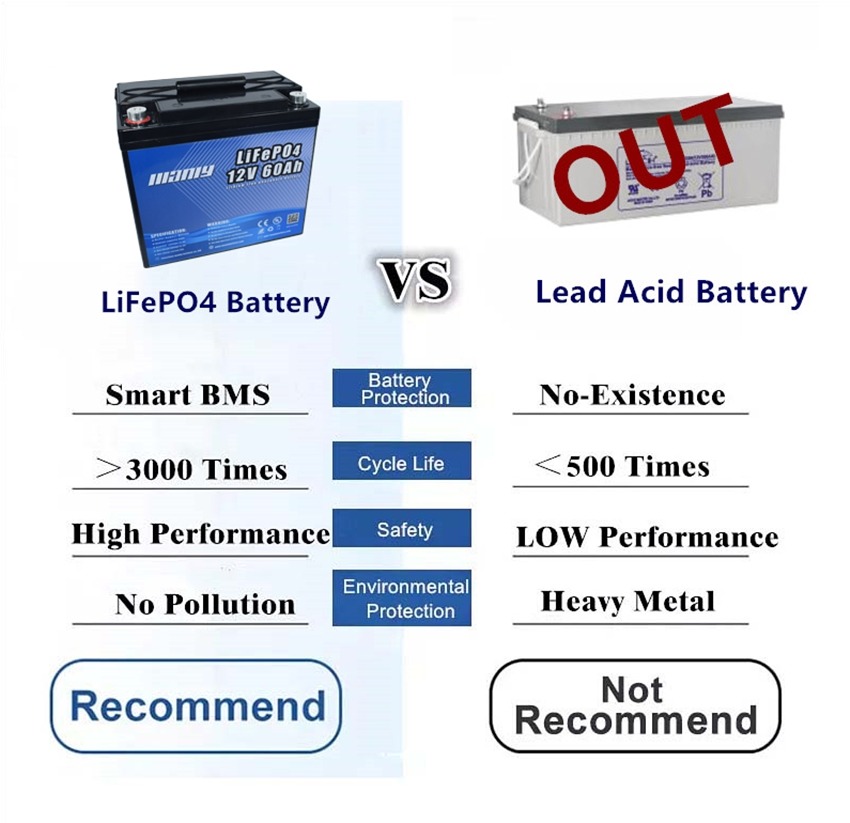
Comparison Table: LiFePO4 vs. Lead Acid Battery
| Feature | LiFePO4 Battery | Lead Acid Battery |
|---|---|---|
| Energy Density | High energy density, more power per unit weight. | Lower energy density. |
| Weight | Lighter, making them more suitable for portable applications. | Heavier, less suitable for applications where weight is a concern. |
| Cycle Life | Typically 2000 – 5000 cycles or more. | Around 300 – 500 cycles. |
| Efficiency | High efficiency, around 85-95%. | Lower efficiency, about 80-85%. |
| Charge Time | Fast charging capability. | Slower charging compared to LiFePO4. |
| Operating Temperature Range | Wider operating temperature range. | More limited temperature range, performance declines in extreme temperatures. |
| Maintenance | Low maintenance, no need for regular watering. | Requires regular maintenance like watering and equalization. |
| Safety | Generally safer, more stable chemistry, lower risk of thermal runaway. | Risk of acid spills and gas emissions, requires careful handling. |
| Environmental Impact | Environmentally friendlier, contains no heavy metals. | Contains lead, a toxic heavy metal, requires careful disposal. |
| Lifespan | Longer lifespan, can last up to 5 years or more. | Shorter lifespan, typically 3-5 years. |
| Cost Over Life Cycle | Initially more expensive but cost-effective over its life cycle. | Cheaper initially but less cost-effective in the long run due to shorter lifespan and maintenance. |
MANLY LiFePO4 Battery vs Other Brands LiFePO4 Battery
MANLY LiFePO4 Batteries stand out in the competitive battery market with their robust combination of innovation, quality, and versatility. Backed by over 13 years of expertise, these batteries, hailing from China’s technological hubs, offer unparalleled customization, catering to diverse applications from solar energy storage to advanced robotics. Unlike standard LiFePO4 batteries, MANLY Batteries boast a remarkable 98% energy efficiency rate, enhanced safety features, and global certifications like UN38.3, IEC62133, UL, and CE. Their commitment to durability and user experience is further exemplified by features like Bluetooth connectivity and intuitive displays. This focus on consumer-centric innovation and superior performance makes MANLY Batteries a leading choice for those seeking reliable, high-quality battery solutions, distinctly setting them apart from other brands in the market.
| Feature | MANLY LiFePO4 Battery | Other Brands LiFePO4 Battery |
|---|---|---|
| Key Competitive Advantage |
|
|
| Customization Options | Offers customization in voltage, capacity, current, dimensions, aesthetics, etc. | Customization varies by manufacturer; not all offer extensive options. |
| Certifications | Boasts UN38.3, IEC62133, UL, CE, among others. | Certification depends on the manufacturer; common ones include CE, UL. |
| Warranty | 10-year warranty. | Warranty periods vary, typically around 1-5 years. |
| Protection Features | Includes short circuit, overcharge/discharge, balancing circuits, overvoltage/overcurrent, and safety against explosion or ignition. | Standard protections include overcharge/discharge, short circuit, and temperature control. |
| Operating Conditions | Operates in -20°C to 75°C. (Advised not to charge below 0°C) | Operating temperature ranges vary, typically -10°C to 60°C. |
| Efficiency Rate | Energy efficiency rate of 98%. | Efficiency rates vary, typically around 85-95%. |
| Enhanced Features | Optional BMS, Bluetooth connectivity and battery level display. | Additional features vary by model and manufacturer. |
| Waterproof | Up to IP67 waterproof rating (depends on the customer’s waterproof requirements for the product) | Not all productions have waterproof |
| Lifespan | Lifespan of 8000+ cycles , typically 10-20 years (Longevity relies on MANLY’s expert R&D team) | Lifespan varies, typically 5-10 years depending on usage and maintenance. |
Unlocking the Potential of Lithium Batteries Across Industries
Let’s delve into the various industries where lithium batteries shine as the preferred power source:
Cold Weather Battery Guide: Top Picks for 2023
Choosing The Right Battery for Electric Scooter
Best Lithium Marine Battery: Guide to Selecting in 2023
The 6 Best Lithium Golf Cart Batteries
1. Battery capacity
Table of Contents
Generally the capacity of the battery is determined by the amount of active material in the battery, usually expressed in milliampere-hour mAh or Ah. For example, 1000 mAh can be discharged for 1 h with a current of 1 A.
1.1 Understanding Battery Capacity: Rated vs. Actual vs. Theoretical
Battery capacity can be categorized into actual capacity, theoretical capacity, and rated capacity, based on different conditions.
The capacity that a battery provides when discharged at a particular discharge rate at 25°C down to its terminal voltage is defined as the battery’s capacity during design and production. This is termed the rated capacity for a given discharge rate RH.
Battery capacity is typically measured in AH (Ampere-hours). Another method of measurement is in terms of CELL (per unit plate) in watts (W/CELL).
- For Ah (Ampere-hours) calculations, you take the discharge current (constant current) I and multiply it by the discharge time (in hours) T. For instance, a 7AH battery discharged continuously at 0.35A can last for approximately 20 hours.
- The standard charging time is 15 hours, and the charging current is 1/10 of the battery’s capacity. Fast charging may reduce the battery’s lifespan.
Battery capacity refers to the size of the stored electrical charge in a battery. The unit for battery capacity is “mAh”, known in Chinese as milliampere-hours. For larger capacity batteries, such as lead-acid batteries, “Ah” (Ampere-hours) is generally used for convenience, where 1Ah = 1000mAh. If a battery has a rated capacity of 1300mAh, and you discharge the battery with a current of 130mA, the battery can operate for about 10 hours (1300mAh/130mA = 10h). If the discharge current is 1300mA, then the operational time drops to around 1 hour. These calculations assume ideal conditions, and actual device operation may vary based on components, like an LCD screen or flash in a digital camera, which can cause large variations in current. Hence, the actual operational time for a device powered by the battery can only be approximated, usually based on real-world experience.
1.2 Unit of Capacity
Typically, battery capacity is measured in ampere-hours (Ah), and this is determined for a specific battery in mind. For instance, the question might be: What’s the capacity of this smartphone battery? Or, what’s the capacity of this electric scooter battery? These queries are unique to each battery. When the battery voltage is already defined and one isn’t considering the real-time voltage, merely stating the ampere-hours can represent the battery’s capacity.
However, when dealing with batteries of different voltages, one can’t simply rely on ampere-hours to denote capacity. Take, for instance, a MANLY 12V 20AH battery and a MANLY 15V 20AH battery. Even though both have 20AH, when powering a device with the same load, the device will work just fine, but the duration of operation will differ. Hence, the standard capacity should be measured in terms of power.
To illustrate further, consider a device that can support both 12V and 24V. If powered by a MANLY 12V 20AH battery, it can last for one hour. However, if two such batteries are connected in series, resulting in 24V 20AH, the ampere-hours remain unchanged, but the operational time doubles. In this context, the capacity should be viewed in terms of the power the battery can hold, not just the ampere-hours.
Power (W) = Power (P) * Time (T) = Current (I) * Voltage (U) * Time (T).
This approach to discussing battery capacity is more meaningful. One must be realistic and factual; otherwise, you might end up with the illogical claim that a smartphone battery has a larger capacity than an electric scooter battery, which is clearly unscientific.
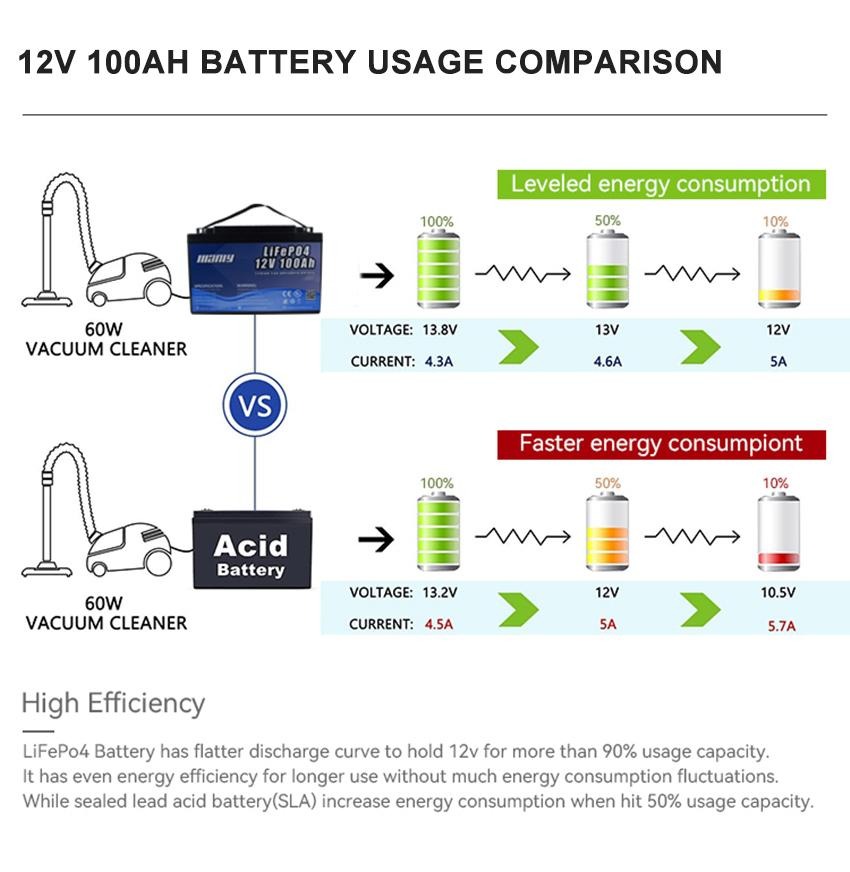
2. Nominal voltage
The potential difference between the positive and negative electrodes of the battery is called the nominal voltage of the battery. The nominal voltage is determined by the electrode potential of the plate material and the concentration of the internal electrolyte. The discharge diagram of lithium battery is parabolic, with 4.3V dropping to 3.7V and 3.7V dropping to 3.0V, both of which change rapidly. Only the discharge time of about 3.7V is the longest, accounting for almost 3/4 of the time, so the nominal voltage of the lithium battery refers to the voltage that maintains the longest discharge time.
- Ternary Lithium Battery
The nominal voltage of a ternary lithium cell is 3.6V, with an operating voltage range between 2.5V and 4.2V. For a battery pack, you multiply the voltage by the number of cells in series. For instance, for a 10-series ternary lithium battery pack, the nominal voltage stands at 36V, and the working voltage range spans from 25V to 42V.
- Lithium Iron Phosphate Battery
The nominal voltage of a lithium iron phosphate cell is 3.2V, with an operational voltage range of 2.0V to 3.65V. Similarly, for the corresponding battery pack, you multiply by the number of cells in series. For example, a 15-series lithium iron phosphate battery pack has a nominal voltage of 48V, with a working voltage range of 30V to 54.75V.
So, what are the implications of a low voltage for lithium batteries?
It’s recommended that lithium batteries be stored long-term with about 70% of their charge. If not in use for 3 to 6 months, it’s advisable to cycle through one full charge and discharge. This benefits the overall lifespan of the battery pack.
If stored for extended periods without use and at very low voltages, the materials in the lithium battery can be adversely affected. Their chemical reactivity might deteriorate, which in turn impacts the battery pack’s lifespan.
Lithium-ion batteries operate at voltages ranging from 2.5V to 4.2V. When the voltage drops below 2.5V, the battery discharge terminates, and due to the closing of the discharge circuit, the current loss of the internal protection circuit drops to its lowest. However, in real-world applications, due to variations in internal materials, the discharge termination voltage can range from 2.5V to 3.0V. When the voltage exceeds 4.2V, the charging circuit is terminated to ensure the battery’s safety.
3. Charge termination voltage
When the rechargeable battery is fully charged, the active material on the electrode plate has reached a saturated state, and the battery voltage will not rise when the battery continues to be charged. The voltage at this time is called the end-of-charge voltage. The ternary lithium battery is 4.2V, and the lithium iron phosphate battery is 3.65V.

4. Discharge termination voltage
The end-of-discharge voltage refers to the lowest voltage allowed when the battery is discharged. The discharge termination voltage is related to the discharge rate.
5. Internal resistance of the battery
The internal resistance of the battery is determined by the resistance of the electrode plate and the resistance of the ion flow. During the charging and discharging process, the resistance of the image engine and the electrode plate is unchanged, but the resistance of the ion flow will increase or decrease with the concentration of the electrolyte and the charged ions. And change. When the OCV voltage of a lithium battery decreases, the impedance will increase. Therefore, when charging at low power (less than 3V), pre-charge (trickle charging) must be carried out first to prevent too much current from causing excessive heat generation of the battery.
Composition of Lithium Battery Internal Resistance
Ohmic resistance mainly arises from the electrode materials, electrolyte, separator resistance, as well as the contact resistance of current collectors and tab connections. It’s related to the battery’s size, structure, and connection methods.
Polarization resistance, which emerges instantly when current is applied, represents the cumulative tendency of various barriers inside the battery preventing charged ions from reaching their destinations. This resistance can be further categorized into electrochemical polarization and concentration polarization.
Currently, the standout 18650 lithium battery has an internal resistance of around 12 milliohms, while typical ones hover between 13 to 15 milliohms. Given that impedance can affect the battery’s performance, generally speaking, 50 milliohms is deemed normal. Between 50 to 100 milliohms, the battery remains functional, but performance starts to degrade. When exceeding 100 milliohms, parallel use is necessary, and anything above 200 milliohms is virtually unusable.
Impacts of Lithium Battery Internal Resistance
All factors that impede the movement of lithium ions and electrons from one pole to another within the lithium battery contribute to its internal resistance. Ideally, the lower the internal resistance, the better. A higher internal resistance leads to increased thermal losses, preventing high current discharge. Moreover, a high internal resistance means the battery heats up during use. Elevated temperatures can cause the battery’s discharge operating voltage to drop and its discharge duration to shorten, severely affecting battery performance and lifespan. In extreme cases, this can even pose a risk of spontaneous combustion.
6. Self-discharge rate
It refers to the percentage of the total capacity that is automatically lost when the battery is not in use for a period of time. Generally, the self-discharge rate of lithium-ion batteries at room temperature is 5%-8%.
6.1 How Does the Discharge Rate Affect Battery Capacity?
The discharge rate directly impacts a battery’s effective capacity. Specifically, a higher discharge rate can decrease the available capacity, as the battery might not be able to maintain its maximum rated capacity during rapid discharges. Thus, when evaluating a battery’s usable capacity, the discharge rate must be taken into account.
6.2 What is the Discharge Rate of Electric Bicycle Batteries?
The discharge rate of electric bicycle batteries can vary based on the specific battery chemistry and design. Electric bikes typically employ lithium-ion batteries due to their high energy density and performance. These batteries generally demonstrate a discharge rate ranging from 1C to 4C or even higher. To illustrate, a 1Ah battery with a 10C discharge rate can deliver a continuous discharge current of 10 amps, whereas a 4C rate would allow for a continuous discharge current of 40 amps.
6.3 What is Considered a High Discharge Rate for Lithium Batteries?
For lithium batteries, a discharge rate typically considered “high” starts at 1C and above. However, it’s important to note that what’s deemed as a high specific discharge rate may vary based on the battery’s design, chemical composition, and intended application.
6.4 What is a Good Discharge Rate for Batteries?
An optimal C-rate for a battery hinges on the specific demands of its application. Typically, a discharge rate that facilitates efficient power transfer without overly stressing the battery is regarded as favorable. It’s recommended to consult the manufacturer’s specifications and guidelines to ascertain the best discharge rate for a particular battery.
6.5 How Do You Calculate the C-rate?
C-rate (C) = Charging or discharging current in amperes (A) / Battery’s rated capacity (Ah)
Let’s delve into an example involving a 100Ah lithium battery:
1C represents a discharge current of 100 amps, meaning the battery can provide a continuous discharge of 100 amps for one hour. In simpler terms, it can handle a load current of 100 amps for 60 minutes.
If we boost the C-rate to 2C, the discharge current becomes 200 amps. This signifies that the battery can now furnish a discharge current of 200 amps, but for a reduced duration. At a 2C rate, the battery can sustain a load current of 200 amps for 30 minutes or half an hour.
On the other hand, reducing the C-rate to 0.5C results in a discharge current of 50 amps. At a 0.5C rate, the battery can deliver a discharge current of 50 amps, thereby prolonging the discharge period. Under these conditions, the battery can support a load current of 50 amps for 2 hours or 120 minutes.
When assessing the performance and capacity of lithium batteries, the C-rate stands out as a crucial factor since it determines both the available discharge current and the corresponding discharge duration.
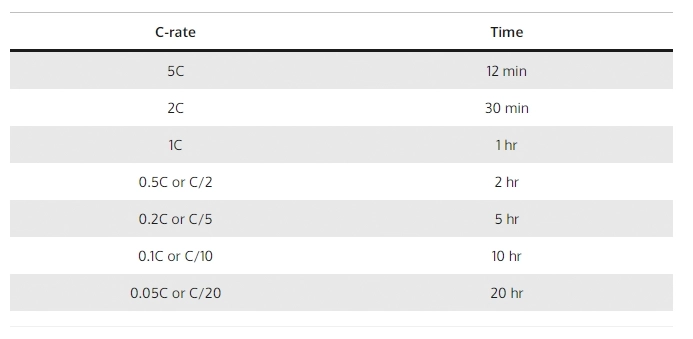
The reason why lithium batteries need protection is determined by their own characteristics. Since the material of the lithium battery itself determines that it cannot be overcharged, overdischarged, overcurrent, short circuited, and ultra-high temperature charge and discharge, the lithium battery components of the lithium battery will always appear with an exquisite protection board.
Ordinary lithium battery protection boards usually include control ICs, MOS switches, resistors, capacitors and auxiliary devices FUSE, PTC, NTC, ID, memory, etc. Among them, the control IC controls the MOS switch to turn on under all normal conditions to make the cell and the external circuit conduct, and when the cell voltage or loop current exceeds the specified value, it immediately controls the MOS switch to turn off to protect the cell’s Safety.
When the protection board is normal, Vdd is high, Vss and VM are low, DO and CO are high. When any parameter of Vdd, Vss, VM is changed, the level of DO or CO will be Changes.
1. Overcharge detection voltage: Under normal conditions, Vdd gradually rises to the voltage between VDD and VSS when the CO terminal changes from high level to low level.
2. Overcharge release voltage: In the charging state, Vdd gradually decreases to the voltage between VDD and VSS when the CO terminal changes from low level to high level.
3. Overdischarge detection voltage: Under normal conditions, Vdd gradually decreases to the voltage between VDD and VSS when the DO terminal changes from high level to low level.
4. Overdischarge release voltage: In the overdischarge state, Vdd gradually rises to the voltage between VDD and VSS when the DO terminal changes from low level to high level.
5. Overcurrent 1 detection voltage: Under normal conditions, VM gradually rises to the voltage between VM and VSS when DO changes from high level to low level.
6. Overcurrent 2 detection voltage: In the normal state, VM rises from OV to the voltage between VM and VSS when the DO terminal changes from high to low at a speed of 1ms or more and 4ms or less.
7. Load short-circuit detection voltage: Under normal conditions, VM starts from OV and rises to the voltage between VM and VSS when the DO terminal changes from high level to low level at a speed of 1μS or more and 50μS or less.
8. Charger detection voltage: In the over-discharge state, VM gradually decreases with OV to the voltage between VM and VSS when DO changes from low level to high level.
9. Current consumption during normal operation: Under normal conditions, the current (IDD) flowing through the VDD terminal is the current consumption during normal operation.
10. Over-discharge current consumption: In the discharging state, the current (IDD) flowing through the VDD terminal is the over-current discharge current consumption.

